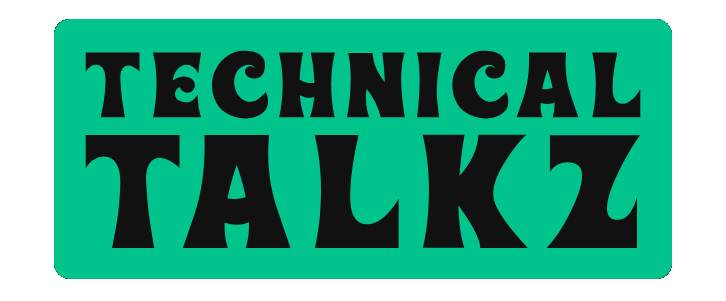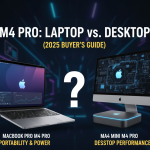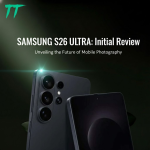Introduction: The Golden Age of Smartphone Photography
The year 2025 marks a turning point in smartphone photography. Gone are the days when DSLR and mirrorless cameras ruled the world of imaging — today, flagship smartphones from Apple, Samsung, and Google are not just competing, but often outperforming traditional cameras in convenience, AI processing, and image detail.
Every year, the battle for the “King of Photography” title heats up among three titans:
- Apple’s iPhone 16 Pro Max,
- Samsung’s Galaxy S25 Ultra, and
- Google’s Pixel 9 Pro.
Each one brings its own blend of hardware innovation, AI-based image processing, and unique photographic style. But the question remains: Which phone truly deserves the crown in 2025?
Let’s explore, analyze, and determine which of these giants captures reality — and imagination — better than the rest.
Section 1: Camera Hardware Overview
1. iPhone 16 Pro Max
Apple has always emphasized color accuracy and dynamic range over raw megapixels. The iPhone 16 Pro Max continues that philosophy with:
- 48MP Main Sensor (f/1.6, 1/1.28″)
- 12MP Ultra-Wide Lens (120° FoV)
- 12MP 5x Telephoto Zoom (periscope lens)
- Apple A18 Pro Bionic Chip with next-gen Photonic Engine
- LiDAR sensor for depth and AR precision
The main improvement is its larger sensor size, enabling better low-light detail, less noise, and improved skin tones.
2. Samsung Galaxy S25 Ultra
Samsung’s 2025 flagship is a powerhouse of camera versatility:
- 200MP ISOCELL HP3 Sensor (f/1.7, 1/1.22”)
- 12MP Ultra-Wide (120° FoV)
- 10MP 3x Telephoto
- 50MP 5x Periscope Telephoto
- Galaxy AI Camera Engine
The 200MP main camera captures incredible detail, while Samsung’s AI sharpens edges and balances contrast, making it ideal for landscapes and high-resolution cropping.
3. Google Pixel 9 Pro
Google’s Pixel 9 Pro may not boast the highest megapixel count, but its computational photography is unmatched:
- 50MP Main (f/1.7, 1/1.31”)
- 48MP Ultra-Wide
- 48MP 5x Telephoto
- Tensor G4 Processor
- AI-Enhanced HDR+, Magic Editor, Best Take, Real Tone
Google’s strength lies not in hardware, but in AI image processing, delivering jaw-dropping results straight from the shutter.
Section 2: Low-Light Photography (Night Mode)
Low-light performance often defines a great camera. Let’s break it down:
iPhone 16 Pro Max
Apple’s new Night Mode 2.0 leverages the A18 Pro Neural Engine to deliver exceptional results. Highlights remain controlled, shadows reveal details without overexposure, and noise reduction feels natural.
Color tones remain warm, realistic, and consistent — especially for human subjects.
Galaxy S25 Ultra
Samsung shines (literally) in night scenes. The 200MP sensor captures vast light data, while multi-frame fusion creates bright, clear images. However, sometimes the output looks slightly oversaturated, a trademark of Samsung processing.
Pixel 9 Pro
The King of Night Photography title goes to Pixel 9 Pro. Its Night Sight and Super Res Zoom handle even the darkest environments gracefully. The Tensor G4’s advanced HDR+ blends multiple exposures, producing balanced shadows, vibrant colors, and lifelike skin tones.
🏆 Winner: Google Pixel 9 Pro — unmatched in color accuracy and detail retention.
Section 3: Daylight & Landscape Photography
Under bright sunlight, all three phones perform brilliantly — but with different philosophies.
- iPhone 16 Pro Max produces a cinematic tone, perfect for photographers who value color accuracy. Its Smart HDR 6 balances skies and greenery beautifully.
- Galaxy S25 Ultra delivers vibrant, high-contrast images, ideal for users who love punchy, social-media-ready photos.
- Pixel 9 Pro captures natural hues and rich textures, often making images appear “realer than real.”
🏆 Winner: Tie between iPhone 16 Pro Max and Pixel 9 Pro — one for color science, one for realism.
Section 4: Portrait & Depth Photography
Portrait photography is all about depth, bokeh quality, and subject isolation.
- iPhone 16 Pro Max: Apple nails skin tone reproduction and edge detection. The new Photonic Engine + LiDAR depth sensing ensures cinematic portraits, even in mixed lighting.
- Galaxy S25 Ultra: The 5x zoom lens enables fantastic portrait compression. However, Samsung’s processing can sometimes over-smooth faces.
- Pixel 9 Pro: Thanks to Google’s Real Tone, skin tones appear natural across all races and lighting conditions. The bokeh simulation looks DSLR-like, with creamy backgrounds and sharp details.
🏆 Winner: iPhone 16 Pro Max — for the most balanced and lifelike portrait rendering.
Section 5: AI and Computational Photography
In 2025, AI is the new lens. Let’s see how each brand uses it:
Apple:
- Smart HDR 6, Deep Fusion, and Photonic Engine
- Intelligent scene optimization with minimal artifacts
- Focuses on authenticity over exaggerated processing
Samsung:
- Galaxy AI Camera Engine
- Object-aware optimization, AI Detail Enhancer, and automatic HDR remastering
- Strong for landscapes and architecture
Google:
- Best Take, Magic Eraser, Photo Unblur, and Sky Recolor
- AI post-processing redefines what’s possible in photography
- The most intelligent photography suite to date
🏆 Winner: Google Pixel 9 Pro — pure AI brilliance.
Section 6: Zoom Power — Optical & Digital
Zoom is the battleground where Samsung dominates.
- iPhone 16 Pro Max: 5x optical zoom; crisp, stable, and detailed up to 10x.
- Galaxy S25 Ultra: Dual zoom system (3x + 5x) and up to 100x Space Zoom with AI sharpening. Incredible for wildlife and moon photography.
- Pixel 9 Pro: 5x optical zoom and 30x digital, enhanced by Super Res AI. Realistic and clean.
🏆 Winner: Samsung Galaxy S25 Ultra — unmatched in telephoto capability.
Section 7: Video Performance
Video is where Apple traditionally reigns.
- iPhone 16 Pro Max: Shoots in 4K 120fps, ProRes HDR, and Cinematic Mode with seamless depth transitions. The stabilization is best-in-class.
- Galaxy S25 Ultra: Now supports 8K 30fps and impressive AI stabilization, but color shifting can occur.
- Pixel 9 Pro: Delivers cinematic tone mapping but lacks Apple’s consistency in motion handling.
🏆 Winner: iPhone 16 Pro Max — the ultimate smartphone for video creators.
Section 8: Color Science and Tone Accuracy
Color science defines the identity of a camera:
- Apple: True-to-life, warm tones.
- Samsung: Vivid, saturated colors.
- Google: Balanced, neutral tones.
🏆 Winner: Apple iPhone 16 Pro Max — industry-leading color accuracy.
Section 9: RAW and Professional Controls
All three phones support RAW, but implementation differs:
- iPhone 16 Pro Max: Apple ProRAW + ProRes for total control.
- Galaxy S25 Ultra: Expert RAW app with manual ISO, shutter, and focus.
- Pixel 9 Pro: Standard RAW support but fewer manual options.
🏆 Winner: Samsung Galaxy S25 Ultra — most flexible for professionals.
Section 10: Overall User Experience
- Apple: Seamless ecosystem, fast image processing, intuitive UI.
- Samsung: Feature-rich camera app, slightly complex but powerful.
- Google: Simplistic interface, AI does most of the heavy lifting.
🏆 Winner: iPhone 16 Pro Max — smooth, consistent, and reliable.
Section 11: Photography for Creators & Social Media
Influencers, vloggers, and content creators value share-ready images and cinematic videos.
- iPhone 16 Pro Max: Dominates for TikTok, YouTube, and Instagram reels.
- Galaxy S25 Ultra: Perfect for travel influencers and long-range content.
- Pixel 9 Pro: Great for spontaneous shots and natural edits.
🏆 Winner: iPhone 16 Pro Max — best all-rounder for content creation.
Final Verdict: The King of Smartphone Photography (2025)
After comparing every factor — hardware, AI, zoom, low light, portraits, and video — here’s the ranking:
- 🥇 iPhone 16 Pro Max — The Overall King of Photography (2025)
- Best in video, portraits, and color science
- Unmatched consistency
- 🥈 Google Pixel 9 Pro — The AI Photography Champion
- Low-light and computational genius
- 🥉 Samsung Galaxy S25 Ultra — The Zoom and Detail Monster
- Best for enthusiasts who love versatility
Final Thoughts
The truth is — every phone today is capable of stunning photography. The choice depends on your style and purpose:
- Choose iPhone 16 Pro Max if you love cinematic realism and perfect skin tones.
- Choose Samsung Galaxy S25 Ultra if you want power, versatility, and insane zoom.
- Choose Google Pixel 9 Pro if you want AI-powered brilliance and effortless photos.
In 2025, smartphone cameras have crossed the boundary of technology — they are now creative tools that help everyone tell their stories beautifully.
So, the crown of 2025’s Photography King goes to the iPhone 16 Pro Max — elegant, accurate, and simply unbeatable.



